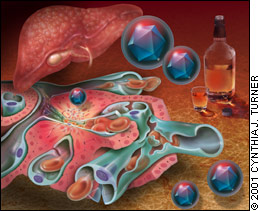
Am Fam Physician. 2001;64(9):1496

AFP has many friends and staff around the country, including connections with Washington, D.C., and New York City. Like many other Americans, AFP's staff members have been affected by the terrorist events of September 11 and the continuing aftermath. Some of AFP's medical editors and staff members work in Washington, D.C., just a few miles away from the Pentagon, while AFP's advertising sales office is located near New York City. On the morning of September 11 at AFP's editorial office at the AAFP headquarters in Leawood, Kan., work on the October 1 issue stopped briefly while staff watched in disbelief as events unfolded on television.
As we monitored live telecasts from afar, our friends and co-workers nearer the disaster areas continued through their daily routines. Moments after the attack on the Pentagon, I received an urgent message from AFP's art coordinator in Washington, D.C. The call did not pertain to the smoke billowing from the nearby Pentagon, but instead was an anxious query about whether I had received a package containing the illustration for the cover of the October 1 issue of AFP. That moment set the tone for life in the wake of these events: the juxtaposition of business as usual with life after an outbreak of terrorism with tragic consequences in our homeland. Our colleagues in Washington, D.C., aware of events around them and still waiting to learn the destiny of the fourth hijacked aircraft, believed to be headed their way, bravely went about their business—and worried, among other things, about whether AFP's October 1 cover would arrive on time.
It is with this spirit that we have continued work in our editorial offices, serving the family physicians who are at the forefront in so many ways, whether tending directly to the wounded or the sick, giving counsel to the weary, or helping other caregivers to prepare for these roles. Three weeks after the attacks on the Pentagon and the World Trade Center, the AAFP conducted its national Annual Scientific Assembly in Atlanta. While various other conventions throughout the country pulled out after the terrorist attacks, the AAFP continued with its mission, and the decision proved to be well supported by members and staff. Not one of AAFP's staff members canceled the trip despite anxieties about travel and separation from families, and the strong member turnout for the meeting demonstrated the resolve and resilience of American family physicians.
Hundreds of physicians stopped by the AAFP publications booth in the exhibit hall to fill out a reader survey, pick up the latest issue of AFP or chat for awhile. Many physicians had traveled long distances, often from remote rural areas, to enjoy some camaraderie while earning a bit of extra CME. It was, indeed, business as usual, apart from a late adjustment of the scientific program to include a lecture on bioterrorism that served as a reminder of recent events. Jonathan Temte, M.D., Ph.D., assistant professor of family medicine and infectious disease researcher at the University of Wisconsin, Madison, helped prepare family physicians for their central role in responding to bioterrorism threats. Last year at the annual assembly, I had stopped to visit with government representatives in a booth sponsoring information on the current anthrax threat; they reported having few visitors that year, as thoughts of anthrax were as far removed as fears of devastating attacks on our American homeland. This year, family physicians are focusing on preparedness.
Family physicians who would like more information on bioterrorism may want to consult the AAFP's Web site for background materials as well as additional resources (www.aafp.org). Future issues of AFP will contain additional information on the family physician's role in response.